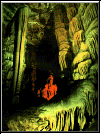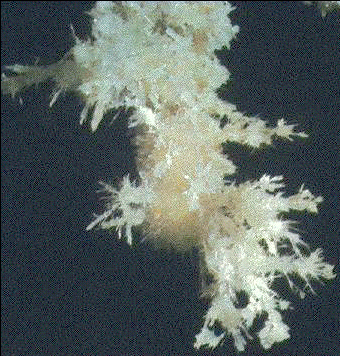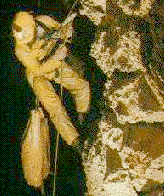 Tour Cave Conservation Home Page
Tour Cave Conservation Home Page
General Disclaimer
This Web project was developed as part of "Internet Resources" courses offered by the Biology and Geology departments of the California State University, Los Angeles in 1995 and 1996. It was submitted to the instructors for evaluation and then placed on-line by the Electronic Desktop Project (EDP). EDP does not update or maintain any of the material of this project, and does not vouch for validity or correctness. Furthermore, the student developing this project was instructed about the rules of copyrights. EDP can in no way be responsible for the inclusion of copyrighted material within this project.
Issues of concern in the protection of caves open to the public
Cave Conservation concerns issues such as the effect of Carbon Dioxide from visitors breath to cave lint from visitors clothing. The lighting of tour caves presents many problems including changes in temperature and algae growth. Before there was electric lighting cave tourism was extremely limited. Thus it has only been in the last hundred years that people visited caves in any great numbers.It has only been in the last fifty or less years that visitors impact has been discovered and an understanding of the rapid errosion of caves physical features has been given serious recognition. Because of the relative newness of this topic cave caretakers are still learning how to protect their caves from irreversible damage. Cave managers do use different means for conserving their caves and should be encouraged to share ideas about how they clean and prevent damage to their caves.
If you are interrested in finding out more about what groups are doing for conservation visit the Caving WWW site . Or to find more specific information about cave management in Australia and New Zealand contact Australian Cave and Karst Management Association (ACKMA). An E-mail letter from Elery Hamilton Smith of ACKMA voices his personal view that about 99% of tour caves are overlighted and says that algae problems disappear when cave lighting is dimmed. American research on lighting tends to focus on the kind of lighting more than the amount of lighting. Some argue that the algae does not disappear with less light but simply remains dormant. Hamilton-Smith also sites video cameras as the main reason that people whould prefer better light but in America probably law suits and insurance requirements are a much greater excuse for brighter light.
Cave Life
Part of the charm of tour caves is the unusual life that uses the cave as their home. Carlsbad Caverns is popular for it's bat flights every summer night. Conservation of bats it also an issue in cave conservation. click here for further information on bats .

For further information in print
search the Internet using the Web Crawler or Gopher's Veronica
USA cavers archive through FTP or U.K.caving publications through FTP You can order any journal articles of interrest in the bibliography by accessing these sources.CSULA Library or Melvyl for books and CARL for articles.
Grampian speleological group logos
How to help in tour cave conservation efforts
If you would like to become a part of cave conservation efforts you could do a project on resource management at Oregon Caves National Monument through Earthwatch. John Roth the principal investigator of this project has worked very heavily in cave conservation matters. This project will involve photo documenting, recording of carbon dioxide and radon levels, temperatures, PH levels and water chemistry. There is also a project on cave archeology at Mammoth cave. To inquire about being involved at the Mammoth cave project click here.

Speleology Server Home Page
HTML Page by: Kathryn Myers.
The following has been added by the Electronic Desktop Project:
 Contact Us
Contact Us
Please take a few minutes to send us your comments and suggestions. We read every message and try to respond promptly to questions. Your feedback will help us improve our project.
If you are an educator who is using our NEXTSTEP or virtual applications in the classroom, we would especially like to hear from you. Let us know what you are doing and how it is working out. Continued support for this project will depend on its impact in science education.
If you are an educator who is interested in making use of our NEXTSTEP or virtual applications, please let us know how we can help.
Other Places To Go
 Return to the Electronic Desktop Project home page
Return to the Electronic Desktop Project home page
 Check out the WWW Virtual Application Catalog from the EDP
Check out the WWW Virtual Application Catalog from the EDP
 Check out the NEXTSTEP Application Catalog from the EDP
Check out the NEXTSTEP Application Catalog from the EDP
 Visit the home page for California State University, Los Angeles
Visit the home page for California State University, Los Angeles
 Tour Cave Conservation Home Page
Tour Cave Conservation Home Page Tour Cave Conservation Home Page
Tour Cave Conservation Home Page

 Contact Us
Contact Us Return to the Electronic Desktop Project home page
Return to the Electronic Desktop Project home page![]() Check out the WWW Virtual Application Catalog from the EDP
Check out the WWW Virtual Application Catalog from the EDP Check out the NEXTSTEP Application Catalog from the EDP
Check out the NEXTSTEP Application Catalog from the EDP Visit the home page for California State University, Los Angeles
Visit the home page for California State University, Los Angeles